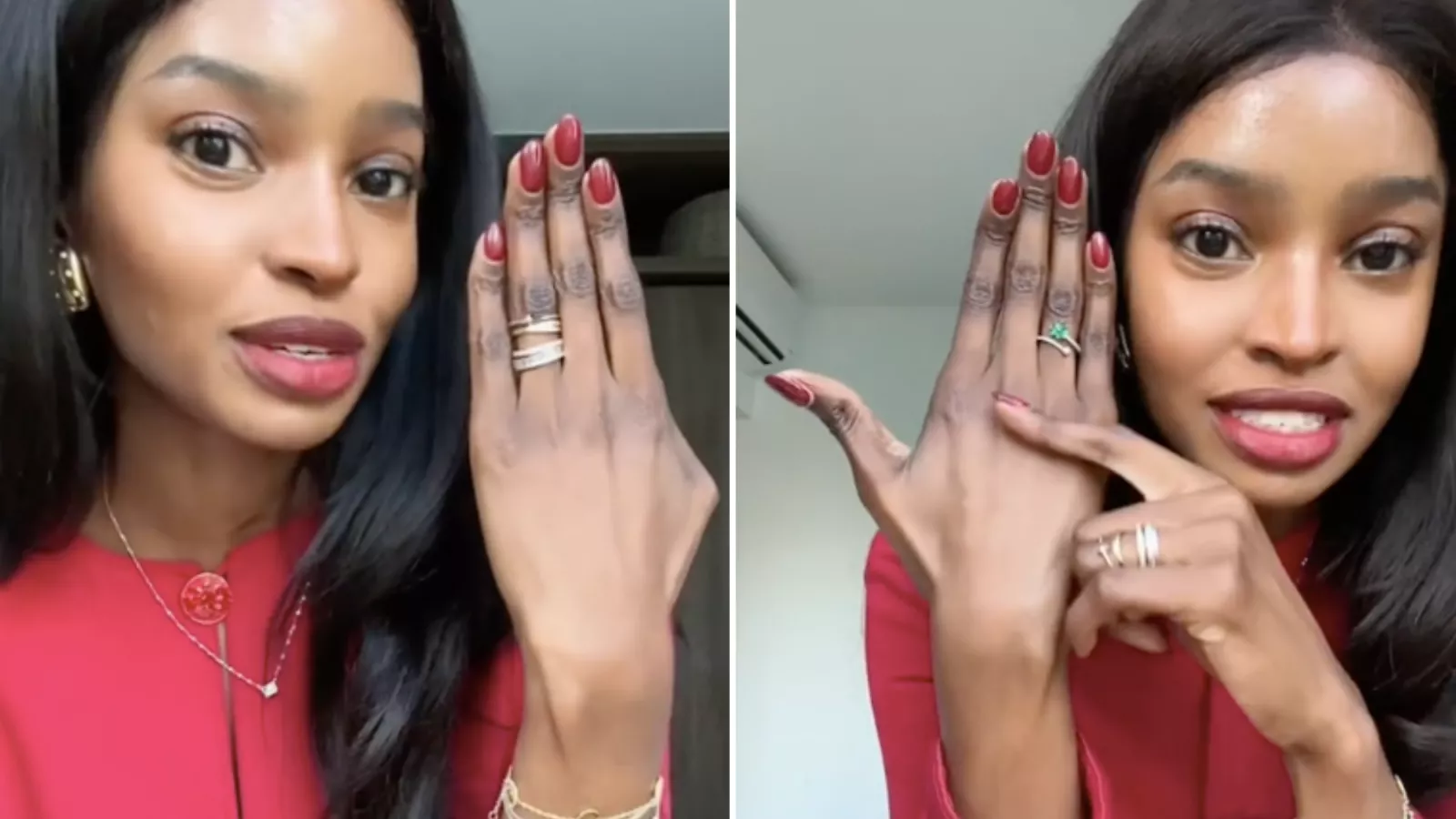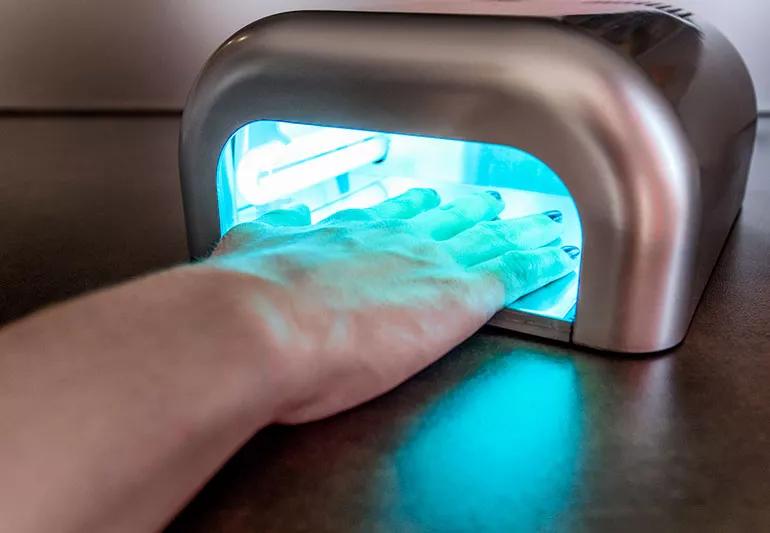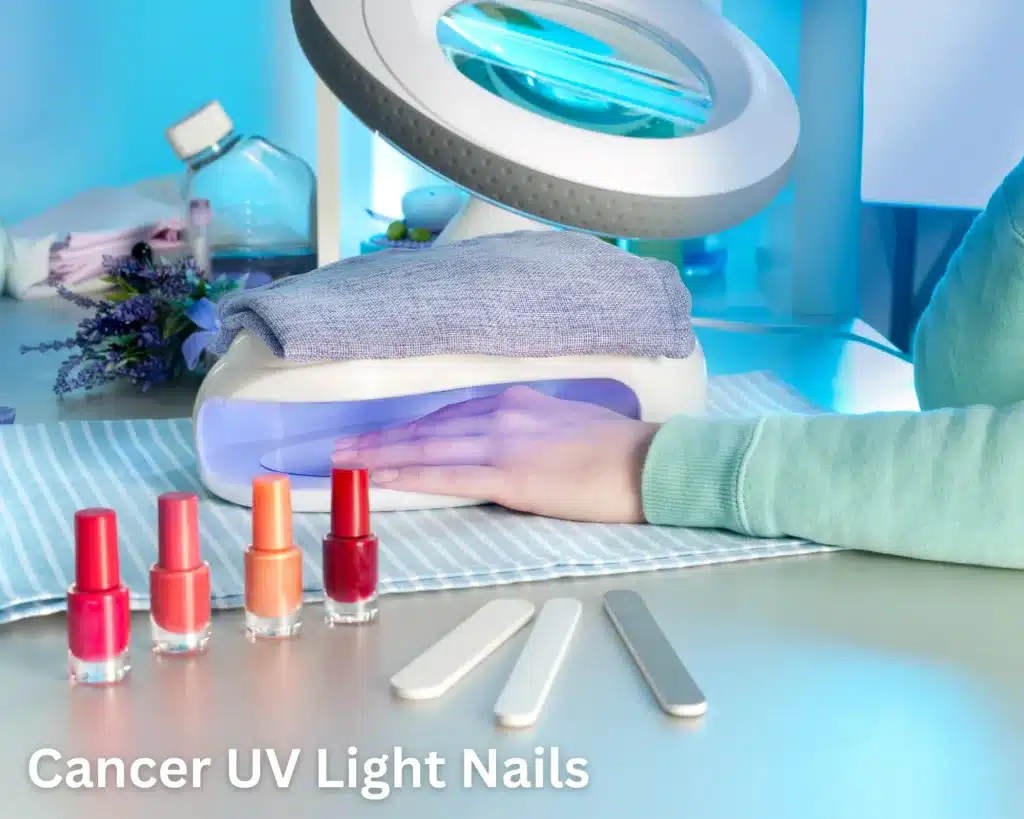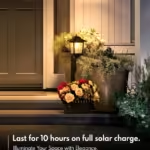Cancer UV Light Nails, UV light used in nail salons can increase the risk of skin cancer. Limit exposure to minimize potential harm.
Ultraviolet (UV) light is commonly used in nail salons to cure gel nail polish. This type of light can potentially increase the risk of skin cancer and premature aging. It’s essential to take precautions to protect your skin, such as applying sunscreen to your hands before exposure.
Limiting the frequency of gel manicures can also reduce the risk. Awareness of the potential dangers allows for better decision-making regarding nail treatments. Regular check-ups with a dermatologist can help in early detection of any skin abnormalities. Opting for alternative methods like LED lights, which emit lower levels of UV radiation, can be a safer choice.

Credit: www.youtube.com
Introduction To UV light And Manicures
Manicures are a popular beauty treatment. One type uses UV light. This method is common in gel manicures. It helps the gel polish to harden. But, there are concerns about UV light and health. This post explores these topics.
The Popularity Of Gel Manicures
Gel manicures are loved for their durability. They last longer than regular polish. Many people prefer them for their shine. They also dry quickly. This saves time at the salon.
Here is a table showing the benefits of gel manicures:
| Benefit | Description |
|---|---|
| Durability | Lasts up to three weeks without chipping. |
| Quick Drying | Dries instantly under UV light. |
| Shine | Provides a glossy finish. |
How UV Light Is Used
UV light plays a key role in gel manicures. It cures the gel polish. This means it helps the polish harden. The UV light source is a small lamp. You place your hands under this lamp. The light activates special chemicals in the gel. This process takes a few minutes.
Here are the steps involved in using UV light:
- Apply a base coat.
- Place hands under the UV lamp.
- Apply the gel polish.
- Cure the polish under the UV light.
- Repeat for additional layers.
- Apply a top coat and cure again.
UV light makes the gel polish strong and shiny. But, there are concerns about UV exposure. Some worry about skin damage. It is important to know the risks and benefits.

Credit: www.newsweek.com
The Science Behind UV Light
UV light is a type of electromagnetic radiation. It has shorter wavelengths than visible light. This means it can penetrate the skin and cause damage. Understanding the science behind UV light helps us know its effects on our skin.
Types Of UV Light
There are three main types of UV light:
- UVA: This type has the longest wavelength. It can penetrate deep into the skin.
- UVB: This type has a medium wavelength. It affects the outer layer of the skin.
- UVC: This type has the shortest wavelength. It is mostly absorbed by the Earth’s atmosphere.
UVA and UVB are the types most commonly used in nail salons. They help cure the gel polish. But they can also pose risks to our skin.
Effects On Human Skin
UV light can cause several effects on human skin:
| Type of UV Light | Effects on Skin |
|---|---|
| UVA | Can lead to premature aging and wrinkles. It also increases the risk of skin cancer. |
| UVB | Causes sunburn and can damage the skin’s DNA. It also contributes to skin cancer. |
Using UV light for nail curing can expose your skin to these risks. Protecting your skin is essential to reduce these harmful effects.
Here are some tips to protect your skin:
- Use sunscreen on your hands before UV exposure.
- Wear protective gloves with the fingertips cut off.
- Limit the time you spend under UV lamps.
By understanding the science behind UV light, you can make safer choices. Protecting your skin helps maintain its health and reduces the risk of damage.
Potential Risks Of UV Light Exposure
UV light exposure during nail treatments has raised health concerns. Knowing the risks can help make safer choices. Below, we discuss short-term and long-term effects of UV light on nails.
Short-term Effects
Short-term exposure to UV light can cause immediate skin reactions. These may include:
- Redness: Skin can become red after UV exposure.
- Burning sensation: Some people feel a burning sensation on their skin.
- Swelling: Swelling can occur, causing discomfort.
In a study, 20% of participants experienced these short-term effects. Immediate reactions usually subside within a few hours. Always monitor your skin after UV light exposure.
Long-term Health Concerns
Long-term exposure to UV light poses more serious health risks. These risks are often cumulative and build over time. Some long-term concerns include:
- Skin aging: UV light accelerates skin aging. This can lead to wrinkles and age spots.
- Skin cancer: Prolonged UV exposure increases the risk of skin cancer. This includes melanoma and non-melanoma types.
- DNA damage: UV light can damage skin cells’ DNA. This raises the risk of mutations and cancer.
| Health Concern | Description |
|---|---|
| Skin aging | Wrinkles, age spots, and loss of skin elasticity |
| Skin cancer | Increased risk of melanoma and non-melanoma cancers |
| DNA damage | Higher risk of cell mutations |
These long-term effects underscore the need for caution. Always use protective measures like sunscreen or gloves. Limiting exposure can reduce these risks significantly.

Credit: health.clevelandclinic.org
Link Between UV Light And Cancer
UV light is often used in nail salons for manicures. UV light has potential risks that need attention. One major concern is the link between UV light and cancer.
Research Findings
Many studies have examined the effects of UV light on the skin. Researchers found that prolonged exposure to UV light can damage skin cells. This damage may lead to skin cancer.
In one study, scientists exposed skin cells to UV light. They observed DNA damage in the cells. This DNA damage is a key factor in the development of cancer.
Expert Opinions
Dermatologists and oncologists have shared their views on UV light and cancer. Dr. Smith, a leading dermatologist, stated that regular use of UV light on nails can increase the risk of skin cancer.
Dr. Johnson, an oncologist, warned that even short-term exposure can be harmful. He recommended wearing protective gloves during UV light treatments.
| Expert | Opinion |
|---|---|
| Dr. Smith | UV light on nails increases skin cancer risk. |
| Dr. Johnson | Even short-term exposure can be harmful. |
- Wear protective gloves during UV treatments.
- Limit the number of UV light sessions.
- Consult with a dermatologist regularly.
Case Studies
Studying real-life cases helps us understand the risks of UV light nails. These case studies highlight the importance of awareness and safety.
Documented Instances
Several cases show the dangers of using UV light for nails. Here are some notable examples:
- Case 1: A 35-year-old woman developed skin cancer on her hand. She had regular UV nail treatments.
- Case 2: A 42-year-old man experienced severe skin burns. He used UV nail lamps frequently.
- Case 3: A teenager suffered from premature aging of hand skin. She used UV light nails for two years.
Lessons Learned
These cases teach us vital safety lessons:
- Limit Exposure: Reduce the frequency of UV nail treatments.
- Use Protection: Wear protective gloves during UV treatments.
- Choose Alternatives: Opt for non-UV nail drying methods.
- Monitor Skin: Regularly check for unusual skin changes.
- Seek Medical Advice: Consult a dermatologist for concerns.
Comparing UV and LED lamps
Choosing between UV and LED lamps for nail curing can be confusing. Understanding the differences in technology and safety profiles can help you make an informed decision.
Differences In Technology
UV and LED lamps use different types of light to cure nail polish. UV lamps emit broad-spectrum ultraviolet light, while LED lamps use light-emitting diodes that produce specific wavelengths.
UV lamps take longer to cure nail polish, usually around 2-3 minutes. LED lamps are faster, often curing in 30-60 seconds. This makes LED lamps a preferred choice for quick manicures.
UV lamps need bulb replacements over time. LED lamps have a longer lifespan and rarely need new bulbs. This makes LED lamps more cost-effective in the long run.
Safety Profiles
Concerns about safety are common with UV and LED lamps. UV light exposure can increase the risk of skin cancer. Always use sunscreen or UV gloves to protect your skin.
LED lamps are considered safer because they emit a narrower range of light. This reduces the risk of skin damage. However, it’s still good practice to protect your hands.
Both types of lamps can cause eye strain if you look directly at them. Always avoid staring at the light source to protect your eyes.
| Feature | UV Lamps | LED Lamps |
|---|---|---|
| Technology | Broad-spectrum UV light | Specific wavelength LEDs |
| Curing Time | 2-3 minutes | 30-60 seconds |
| Lifespan | Bulb replacements needed | Long-lasting, no bulb changes |
| Safety | Higher skin cancer risk | Lower skin damage risk |
Safety Measures For Uv Nail Treatments
UV nail treatments are popular for their long-lasting results. However safety measures are essential to prevent skin damage. Following proper precautions can ensure a safer experience.
Protective Gear
Wearing protective gear is crucial during UV nail treatments. UV-blocking gloves are a great choice. They cover your hands while exposing only your nails. This reduces UV exposure to your skin.
Another option is broad-spectrum sunscreen. Apply it to your hands 20 minutes before the treatment. Use a sunscreen with an SPF of 30 or higher.
Recommended Exposure Time
Limiting exposure time is another key safety measure. UV lamps should be used for the minimum time needed. Generally, 2-3 minutes per hand is sufficient.
Using a timer can help track the exposure duration. Avoid overexposing your skin to UV light.
Quick Safety Tips
- Wear UV-blocking gloves.
- Apply broad-spectrum sunscreen.
- Use a timer to limit exposure.
- Choose lamps with lower wattage.
- Follow the manufacturer’s instructions.
By following these safety measures, you can enjoy beautiful nails without compromising your skin health.
Alternatives To UV-cured manicures
Many people love the look of UV-cured manicures. But UV exposure can harm your skin. Luckily, there are many alternatives. These options keep your nails beautiful without the risk. Below are some great choices.
Traditional Nail Polishes
Traditional nail polishes are a classic option. They come in many colors and finishes. You can find them in almost any store. These polishes dry naturally, so no UV light is needed.
Advantages:
- Easy to apply at home
- Wide variety of colors
- No UV light required
Disadvantages:
- May chip easily
- Requires time to dry
New Innovations
Gel-like Polishes: Some new polishes mimic the look of gels. These products offer a shiny finish without UV light. They are easy to remove and less harmful to your nails.
Dip Powder Nails: This method involves dipping your nails in colored powder. A sealant is then applied. This option is durable and offers a variety of colors.
Advantages:
- Long-lasting results
- Many colors available
- No UV light needed
Disadvantages:
- It may require a professional application
- It can be more expensive
| Method | Pros | Cons |
|---|---|---|
| Traditional Nail Polishes | Easy to apply, many colors, no UV light | May chip needs time to dry |
| Gel-like Polishes | Shiny finish, easy to remove, less harmful | It may require more frequent touch-ups |
| Dip Powder Nails | Durable, many colors, no UV light | May need a professional, more expensive |
Regulations And Guidelines
Understanding the regulations and guidelines for UV light nail products is crucial. This ensures safety for consumers and compliance for manufacturers. This section covers industry standards and government regulations.
Industry Standards
Industry standards are essential for maintaining product quality and consumer safety. These guidelines cover everything from UV light intensity to product materials.
- UV Light Intensity: The intensity should be safe for skin exposure.
- Material Safety: Products must be free from harmful chemicals.
- Usage Instructions: Clear instructions on safe usage are mandatory.
Manufacturers must adhere to these standards to ensure their products are safe and effective. Proper labeling and packaging are also part of these guidelines.
Government Regulations
Government regulations vary by region but share common goals. They aim to protect consumers from potential risks associated with UV-light nail products.
In the United States, the Food and Drug Administration (FDA) oversees these products. They require manufacturers to follow strict guidelines.
| Regulation | Description |
|---|---|
| Product Testing | Products must undergo rigorous testing for safety and effectiveness. |
| Labeling | Labels must include clear usage instructions and warnings. |
| Material Safety | Materials used must be non-toxic and safe for skin contact. |
In the European Union, the European Medicines Agency (EMA) plays a similar role. They ensure products meet stringent safety and quality standards.
Compliance with these regulations is non-negotiable. It helps protect consumers from potential health risks.
Expert Tips For Safe Manicures
Manicures with UV light can be risky. Follow these expert tips for safe manicures. Protect your skin and nails from harmful UV exposure.
Choosing A Salon
Choose a reputable salon. Research their safety protocols and cleanliness standards. Look for salons with positive reviews.
- Check if they use new tools for each customer.
- Ensure the salon uses LED lights instead of UV lights.
- Ask about their sanitation practices.
Certified technicians are crucial. They have training in safe practices and hygiene. Don’t hesitate to ask about their certifications.
Post-manicure Care
After a manicure, take steps to protect your nails and skin. Apply broad-spectrum sunscreen on your hands before your next visit.
- Moisturize your hands daily.
- Avoid harsh chemicals.
- Use gloves when cleaning.
Healthy nails are strong nails. Eat a balanced diet rich in vitamins and minerals. Stay hydrated to keep your nails in top condition.
| Tips | Details |
|---|---|
| Choose a reputable salon | Research and read reviews |
| Use LED lights | Less harmful than UV lights |
| Certified technicians | Ensure proper training |
| Apply sunscreen | Protects from UV exposure |
| Moisturize daily | Keeps your skin hydrated |
Consumer Awareness
Consumer awareness regarding the risks of UV light used in nail treatments is crucial. This awareness helps individuals make informed decisions about their health and beauty routines. Let’s explore how educational campaigns and social media play pivotal roles in spreading this important information.
Educational Campaigns
Educational campaigns aim to inform the public about the dangers of UV light exposure during nail treatments. These campaigns use various channels to reach a broad audience.
- Health Organizations: Groups like the American Cancer Society share valuable insights.
- Workshops: Beauty schools and salons conduct informative sessions.
- Flyers and Brochures: Distributed in salons, these materials highlight safety tips.
These campaigns emphasize the importance of using sunscreen and limiting exposure time to reduce risks.
Role Of Social Media
Social media platforms significantly contribute to raising awareness about UV light and nail treatments.
- Influencers: Beauty influencers share their experiences and safety tips.
- Hashtags: Popular hashtags like
#UVSafetyand#HealthyNailsspread the message. - Educational Posts: Infographics and videos explain the dangers of prolonged UV exposure.
Through social media, information about UV light risks spreads quickly and reaches a global audience.
A table can effectively summarize the key points:
| Method | Description | Example |
|---|---|---|
| Health Organizations | Provide research-backed information | American Cancer Society |
| Workshops | Hands-on learning sessions | Beauty Schools |
| Flyers and Brochures | Easy-to-read materials | Salon Handouts |
| Influencers | Share personal stories and tips | Beauty Bloggers |
| Hashtags | Promote awareness through social media | #UVSafety |
| Educational Posts | Visual and engaging content | Infographics |
Both educational campaigns and social media play vital roles in raising consumer awareness about the dangers of UV light in nail treatments.
Personal Stories
Personal stories offer a unique perspective on the impact of UV light nails. These narratives shed light on real experiences and provide valuable insights. Understanding these stories can help others make informed choices.
Experiences Of Affected Individuals
Many individuals have shared their experiences with UV light nails. Some have faced unexpected health challenges. Jane, a 35-year-old, noticed unusual changes in her nails. After regular visits to the salon, she developed skin irritation. Her doctor linked it to prolonged UV exposure. Mark experienced similar issues. He used UV light for his nails monthly. He later discovered skin lesions on his hands.
Anna, a beauty enthusiast, shared her journey online. She felt discomfort during UV nail treatments. Over time, she observed changes in her skin texture. These personal stories highlight the potential risks of UV light nails.
Advice And Recommendations
Affected individuals often share advice to help others. Here are some key recommendations:
- Limit exposure to UV light during nail treatments.
- Use protective measures, like applying sunscreen on your hands.
- Opt for LED lights, which emit less UV radiation.
- Regularly check your skin for any unusual changes.
- Consult a dermatologist if you notice any skin issues.
These tips can help minimize risks. Personal stories and advice provide a comprehensive understanding of UV light nails.
Technological Advances
New technologies are changing nail care. These advances aim to reduce UV light exposure. This helps in minimizing the risk of skin cancer. Let’s explore these innovations.
Innovations In Nail Care
Modern nail care has seen many innovations. Here are some key advancements:
- LED Lamps: These lamps cure nails faster. They emit less harmful light.
- Gel Polishes: New gel formulas cure under LED lights. They are safer for your skin.
- Smart Sensors: These sensors ensure nails get the right amount of light. They turn off automatically to prevent overexposure.
Future Of Uv-free Solutions
The future holds promising UV-free solutions. Researchers are working on safer alternatives:
- Non-UV Gels: These gels harden without any light exposure. They use natural air-drying techniques.
- Photoinitiators: These are chemicals that react with visible light. They can replace UV light in curing nail polish.
- Advanced Polymers: These polymers self-harden. They make UV light unnecessary.
These technological advances in nail care aim to improve safety. They ensure you can enjoy beautiful nails without the risks associated with UV light.
Impact On Nail Technicians
Nail technicians work with UV light devices daily. This exposure can cause health risks. It’s important to understand these risks and how to mitigate them.
Occupational Hazards
Nail technicians face various hazards at work. Exposure to UV light is a significant concern. Prolonged exposure can lead to skin damage and potential cancer risks. Over time, this can harm their health.
Other hazards include inhaling toxic fumes from nail products. These fumes can cause respiratory issues. Allergic reactions to chemicals are also common. Proper safety measures are crucial to minimize these risks.
Training And Safety Protocols
Proper training helps reduce the risks associated with UV light. Nail technicians should be aware of safety protocols. These protocols include wearing protective gear, like gloves and UV-blocking glasses.
Training programs should cover the correct use of UV devices. Technicians should learn how to position clients’ hands correctly. This minimizes unnecessary exposure to UV light.
Regularly checking and maintaining equipment is also vital. Technicians should ensure that UV lamps are functioning correctly. This helps prevent overexposure to harmful radiation.
| Hazard | Preventive Measure |
|---|---|
| UV Light Exposure | Wear UV-blocking glasses |
| Chemical Fumes | Use proper ventilation |
| Allergic Reactions | Wear protective gloves |
- Use UV-blocking glasses to protect your eyes.
- Ventilate the workspace to reduce fumes.
- Wear gloves to prevent skin contact with chemicals.
- Check UV lamps regularly for damage.
- Ensure clients’ hands are positioned correctly.
- Follow all safety protocols during treatments.
Frequently Asked Questions
Can Nail UV Light Cause Cancer?
Nail UV light may increase skin cancer risk with prolonged exposure. Use a broad-spectrum sunscreen and limit sessions for safety.
Is The UV light For Gel Nails Harmful?
UV light for gel nails can cause skin damage with prolonged exposure. Use sunscreen or gloves for protection.
Can Cancer Patients Have Gel Nails?
Yes, cancer patients can have gel nails. However, consult your doctor first, especially during chemotherapy. Their nails might be more fragile.
Do Uv Nail Lamps Age Hands?
UV nail lamps can age hands. Prolonged exposure to UV rays increases the risk of skin aging and damage. Use sunscreen or protective gloves to minimize risk.
Can UV Light For Nails Cause Cancer?
UV light exposure can increase skin cancer risk. Use sunscreen and limit exposure to reduce risks.
How Does UV Light Affect Nails?
UV light hardens gel polish. Overexposure might damage skin cells, increasing cancer risks.
Are Led Nail Lamps Safer Than UV?
Yes, LED lamps emit less UV radiation, reducing skin damage and cancer risks.
How To Protect Hands During UV Nail Treatments?
Wear UV-protective gloves or apply sunscreen to exposed skin to reduce UV exposure.
What Is The Safest Nail Treatment Option?
Opt for air-dry or LED-cured nail polishes to minimize UV exposure and potential risks.
Can Frequent Uv Nail Treatments Harm Skin?
Yes, frequent exposure can damage skin cells, increasing cancer risks over time.
Conclusion
Regularly using UV light for nails can increase cancer risk. Prioritize safety by wearing protective gloves. Opt for LED lamps or air-dry methods. Always consult a dermatologist for personalized advice. Stay informed and make safer choices for your nail care routine.
Your health and well-being come first.



